We have a bad habit of getting stuck in storms while traveling the Trans Labrador. So far its Happened 4 times. Once resulted in a 8 Hour stopover on the Eagle River Plateau. I’ll tell you a little about each of the stories, but know there’s a point to these little antidotes.
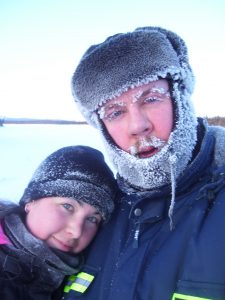
Out snowshoeing, somewhere along the Highway.
First time: Happy New YEAR!
NORMAL DURATION – 4 Hours
STORM DURATION – 10 Hours
We were headed to the Labrador Coast for New Years. It was a Friday afternoon and we left from work. We met up with my wife’s sister and boyfriend before we got to Goose Bay. In Goose Bay the weather was good and it was getting dark. We pressed on thinking it was warm and we wouldn’t have much to worry about. About an hour outside Goose we hit some snow, then more snow and then even more snow. It got to a point to where we had to take turns in front, bashing out way through Bumper High snow drifts. (Both Rigs were lifted) After a good 5 hours of this it all turned to Rain, which made everything worse, the nice soft drifts now became heavy wet snow berms that we had to climb through. We got to our destination, but the normally 4-hour drive took us 10 hours that night.
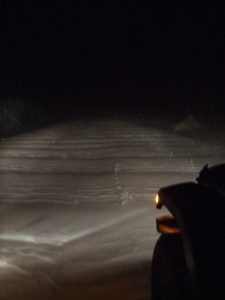
Drift on the Highway that night.

our companions
Second time: Unexpected in November
NORMAL DURATION – 4 Hours
STORM DURATION – 18 Hours
After a visit to the Coast in the End of November we left to return home. We had been watching the weather because there was a storm looming, when we left it was nice and the road was open the whole way from Port Hope Simpson. What we didn’t know was that shortly after we left Cartwright Junction, they closed the gate behind us. It was a mild day, but it began to snow heavily. I guess we were the first ones to hit the highway that morning as there wasn’t a track to be seen. The Snow began to build up on the roadway and soon there was nothing delineating the sides. We stayed in the middle and took our time. It actually got to a point where we were crawling along in 4Low, stopping every 15 mins to clear our windshield wipers. We were doing fine taking our time until we came up on a Wing Truck that was off the road, there was a crew there trying to get the truck back on the road. Immediately one of them came up and said “You got to go back, you can’t go this way……” we were more than half way and a return trip just wasn’t possible…. There was enough gas to get to Goose Bay but not enough to get back to PHS. He insisted that if we waited the Police would be waiting for us in Goose…. We took our chances and Waited. (Which was a bunch of Bull BTW) For almost 8 hours the crew worked to get the truck out of the way. When they finally got it back on the road, they escorted us to Crooks Lake, (Which is a Snow Clearing Depot about half way between Cartwright Junction and Goose Bay.) We proceeded on past Crooks Lake, because it had been plowed a few hours before…… Yeah that didn’t make a whole lot of difference, the storm had covered everything in. We caravaned with another couple until we hit Veterans Bridge…. Needless to say, we didn’t continue that night, and elected to stay in Goose Bay for the night.
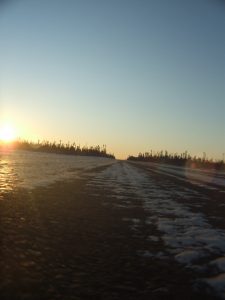
Third Time: Testing out the Gladiator / Heading East
NORMAL DURATION – 6 Hours
STORM DURATION – 8 Hours
This year we wanted to go see Sheena’s parents with the new baby. SO, we packed up the new Gladiator and headed off, we went early because we knew a storm was supposed to hit later that day. Well, it hit a little early, the road was slick as a slip and slide covered in Dish Soap. Luckily, we didn’t have any problem, but the group from goose bay we came upon out in the trees we’re so lucky. Fortunately, no one got hurt, and the truck only received cosmetic damage. We hauled out the recovery gear and pulled him back up on the road. By the time we hit Goose Bay the storm had calmed down and the rest of the trip down was uneventful.
Fourth time: Testing out the Gladiator / The Return West
NORMAL DURATION – 10 Hours
STORM DURATION – 15 Hours
On the same trip we came back in a crazy blizzard, 4 WD the whole way from PHS to Labrador City. Wet sloppy slushy road the whole way. We passed by 3 vehicles that were off the road or flipped over, all had happened way before we got there. But once again we had to creep along and take our time. Stopping periodically to clear out the snow and check on the Jeep.
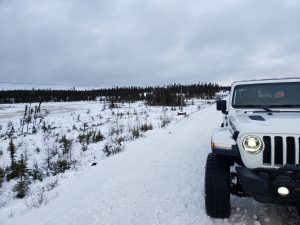
SO this is what we’ve learned:
- Always plan on having Extra Gas, if you have to stop for an extended period you will need to heat your rig, that takes gas. The section from Port Hope to Goose Bay is just about the range for normal average vehicles.
- Pack Warm Clothes even if you don’t think you need them. Snow Pants, a warm Jacket, hat and Mitts, could be all that keeps you alive on the side of the road in a raging blizzard.
- Extra Food and water is Essential. If you are Hungry or dehydrated hypothermia sets in a lot faster. Melting snow in your mouth… reduces your core body temp… bad idea.
- There are railway crossings on the West end of the TLH, in a race with a train, the train will always win. Heed the warnings and slow / stop at the crossings.
- Let someone know where you are going and where you intend to stop for the night. The sooner someone knows you’re overdue the sooner someone can come looking for you.
- Basic Recovery Gear is a requirement. It’s something you hope you won’t need, but a Shovel and tow strap can mean the difference between a night in the ditch or a safe trip to the next place. Its nice if you can help out a fellow traveler too.
- Check your rig before you leave and again when you can. Rough winter roads mean you break stuff. Ice and snow can bust off wires and freeze up around suspension components. Real nice to know you have a problem, before you have to try to fix it out in the middle of nowhere, in the snow.(See photos below)
- If it’s available, bring some form of communication, the province supplies Satellite phones that can be picked up and dropped off at points along the TLH. The phones are pre-programmed to enable calls to be directed to the Royal Newfoundland Constabulary (RNC) in Labrador City, which will co-ordinate appropriate emergency response through either the RNC or RCMP. We have been carrying a SPOT unit with us for Years. Its great to know you have that Panic Button if something really Hits the Fan!
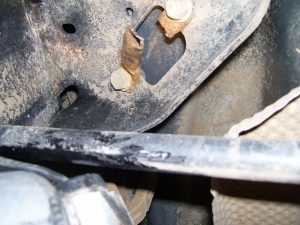
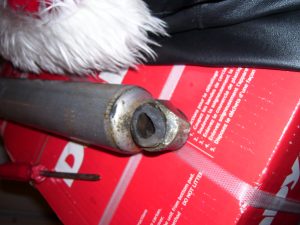
Destroyed a shock and bar pin coming back on a trip, as you can see the shock dragged for a bit before we noticed.
MORE INFO:
I’m not hoping to deter anyone from traveling the road in the winter, it’s actually one of the most beautiful times of year to travel the road. The winter scenery is AMAZING! But I’m just hoping this post will get you to keep in mind that winter in Labrador can be unpredictable and dangerous if you’re not prepared.
Some of my most beautiful pictures have been in the dead of winter along the TLH. And the best time is when it’s sunny and -40C. Here’s a few!
- Calm before the storm
- Hunting Ptarmigan
- Herds of caribou
- St Lewis during Ice Berg Season
- Odd Moose around
- Silver Fox
- Feed of Birds
- Nice Shot
- Smelting on the Alexis River
For those of you following along, I haven’t forgotten the article about the useful Apps, I’ve just gathering more info. Keep an eye out for it in the coming weeks.
Go anywhere, beat anything!
Labrador Jeeper.
By the Way, of you have an article that you think is Labrador/Offroad/Overlanding related and you think it fits this site send me an e-mail with your idea. I would love to have submissions from others about their experiences.

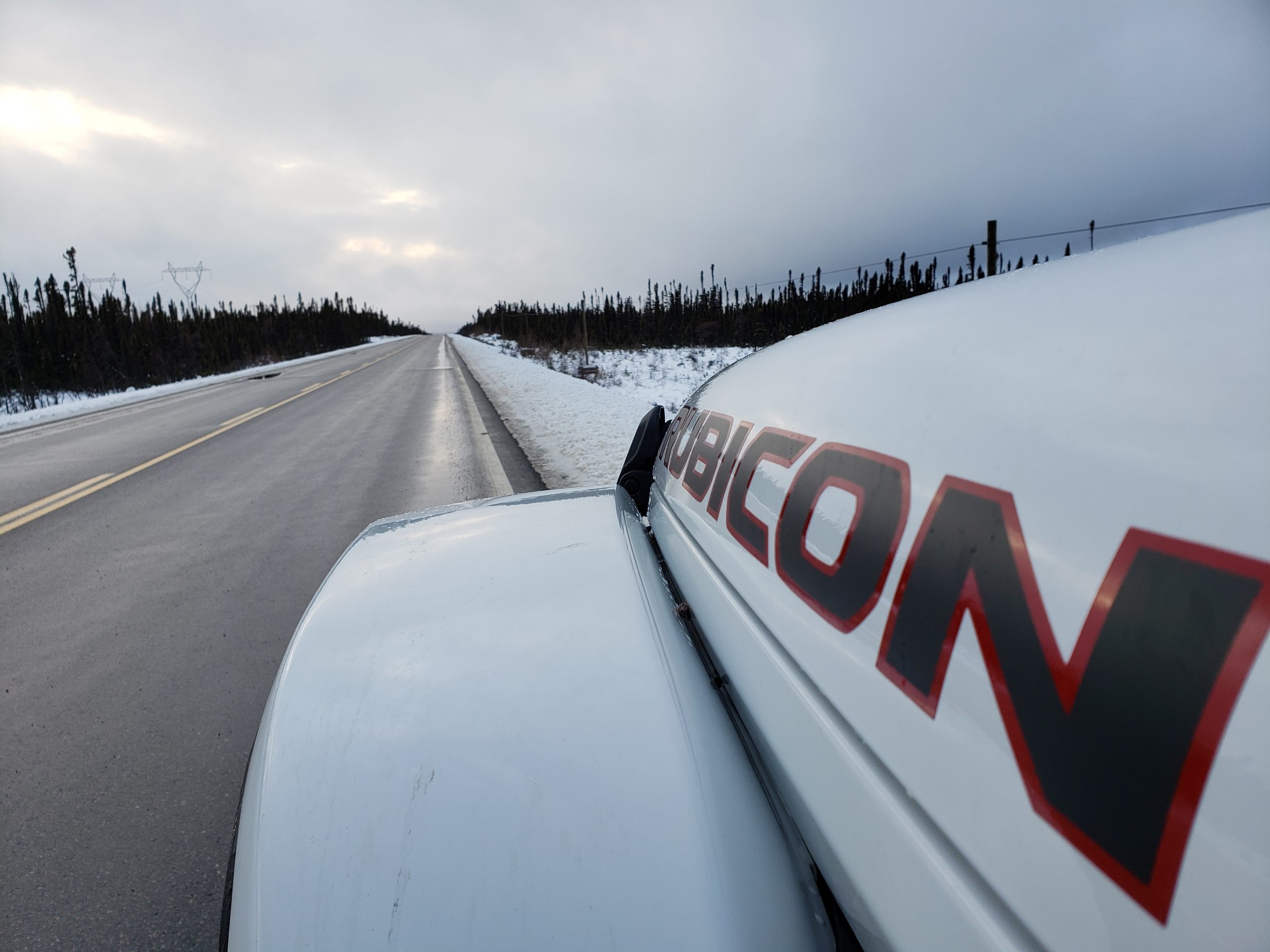
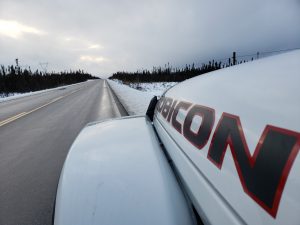
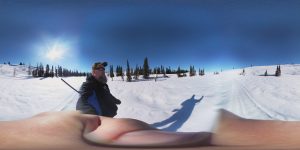
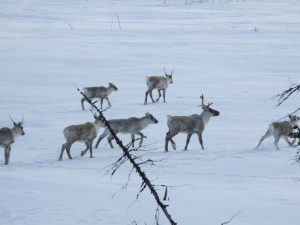
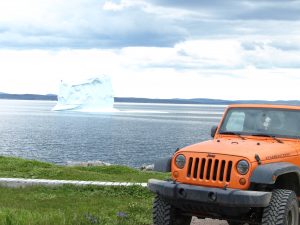
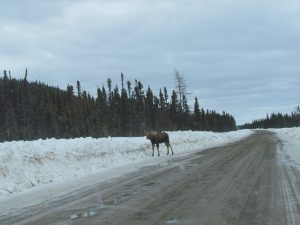
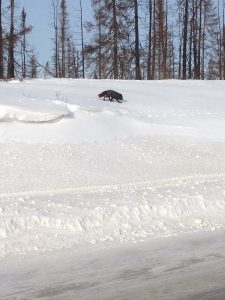
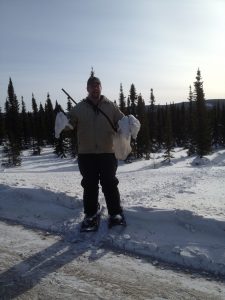
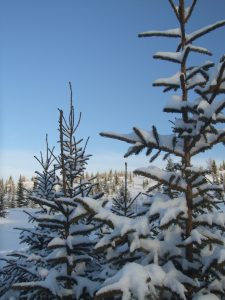

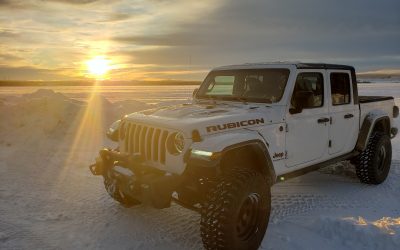
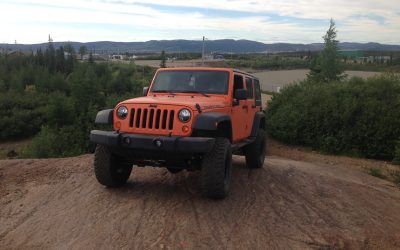
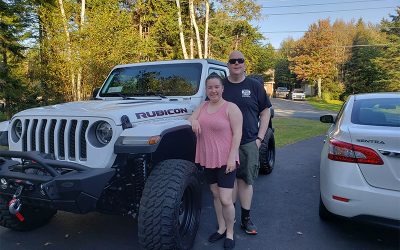
A good friend pointed out that i didn’t include a first Aid Kit in my list of Must Haves! You should defiantly be carrying a First Aid Kit.